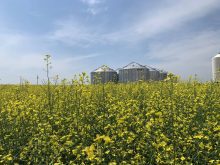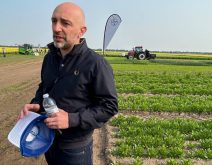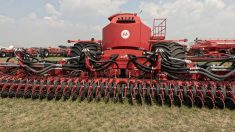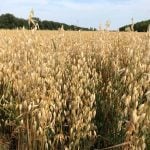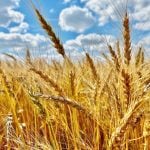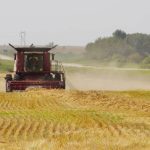Say it’s been about a month and a half since your canola has been in the ground. Do you know if you’re on track toward an even plant stand and optimum yield, or do you still have some work to do? A new online tool can help producers find out by entering a few numbers on their favourite smart device.
Canolacounts.ca has been developed by the canola industry to encourage plant establishment scouting in every field every year. By doing so, producers can determine if they’re on the right track toward crop uniformity and a target stand. In the canola world, that goal is a stand of five to eight plants per square foot, which, according to research, gives canola plants the best opportunity to attain optimum yield.
Read Also

Measuring the components of healthy soil in Alberta
The data Prairie farmers get from chemical analysis of soils are necessary to develop a field fertility program — but as an Alberta program shows, those data don’t tell the whole story needed to assess soil health.
According to the Canola Council of Canada (CCC), many canola fields are still averaging 50 to 60 per cent emergence, meaning of every 10 seeds planted, four or five fail to emerge.
“What canolacounts.ca does is give farmers a chance to check and continue to fine-tune their seeding operations and get the most for that canola seed investment,” says Jason Casselman, a CCC agronomy specialist based in Fairview, Alta.
Although it can be, and is, used as a measurement tool for individual producers, the CCC has bigger things in mind. Growers are encouraged to share their results in a crowdsourcing effort to record and map average canola emergence throughout the Prairies (these maps, available on the CCC website, are recorded by township in order to protect growers’ private data).

This helps canola growers, agronomists and crop scouts better understand factors and conditions related to canola plant establishment and what adjustments may be necessary at seeding time to improve emergence percentages, says Casselman. It also allows producers to compare how canola emergence in their regions is faring compared with locations across the Prairie provinces.
“It populates a database for the Canola Council to put all of that information together and map it out across Western Canada,” he says. “It gives farmers across Western Canada an idea of how well they’re doing for canola counts and some of the conditions they might have experienced during the spring.”
Using canola counts for best results
You’ve probably guessed by now that canolacounts.ca isn’t going to work without scouting. CCC agronomists often recommend using a hula hoop to introduce randomization into the scouting process. In fact, the organization has branded hoops available for free for canola farmers. (Growers, agronomists and crop scouts who would like a canola count hoop should contact their provincial canola growers’ association.)
The website is intended to be used when canola is at the two- to four-leaf stage. There are agronomic reasons for this timing, of course, but it’s also useful because it follows seeding closely enough that growers are less likely to forget its specifics.

“Those are still pretty fresh in your mind at that stage and you can say ‘Yeah, I was probably a little bit too deep with my seed or I was probably a little bit too fast when I was seeding this field, conditions just weren’t 100 per cent right, or we had a rain in between seeding in this field and the other field.’ Those are some of the things that you’re able to account for,” says Casselman.
He encourages producers to scout and enter their numbers just prior to the first in-crop herbicide pass. This can help producers more easily find their problem fields and take action on those areas rather than making an expensive crop-wide application.
Casselman offers some examples of what producers should be looking for while scouting. “Did I lose some plants to insect damage? Did I lose some of my plant stand to environmental factors or maybe some frost or dry conditions where I just didn’t get emergence? Or was there something going on with fertilizer placement? Did root rot cause some disease issues on that stand?”
Why is five to eight plants per square foot so important to canola production? For one, it’s the point where stands are best equipped for weed competition, says Casselman. It also works as something of an insurance plan.
“You can get the same yield with less plants, but you’re at risk if you lose any of those plants when you have less than five,” he says.
“At that point, if you’re losing any plants at all and you lose even distribution of plants across the fields, then you’re going to have problems as far as weed competition and maturity at harvest time, staging for fungicide applications and getting the most optimum yield from that field.”
Not having enough plants also creates product inefficiency, he says. “Any of the resources you’ve applied, whether it’s fertilizer, insecticide or other crop protection products, when you have less than five to eight plants per square foot you’re wasting some of those resources.”
Similarly, stands of more than eight per square foot are signs a producer may be getting hit in the pocket unnecessarily, says Casselman.
“If you have more than eight plants per square foot, then you’re spending more on seed,” he says. “You’re sacrificing some of your profits by spending more of your money on seed.”
Canola counts step by step
After hitting “Start” on the canolacounts.ca welcome page, enter your name, email address, farm name and field nickname where indicated.
Below that, producers enter their actual plant density in either plants per square foot or square metre. After that, producers fill in thousand seed weight as well as seeding rate in pounds per acre.
The program calculates an emergence percentage based on those three numbers. In many cases, emergence is in the range of 60 per cent, says Casselman.
“We’re trying to increase that 60 per cent number because, right now, guys are buying a bag of seed and only about 60 per cent of it is actually making a plant because of things they may be doing or not doing at seeding time.”
Producers have the choice to opt in to the crowd-sourced science component of the process. If they do so, their anonymous data will become part of maps that measure emergence across the three Prairie provinces. Casselman says the mapping process is similar to that used by the Prairie Pest Monitoring Network (prairiepest.ca), which populates risk maps with potential insect crop threats.
Achieving an optimum plant stand
What are the best management practices involved in increasing the likelihood of a canola stand of five to eight plants per square foot? Depth and speed are major factors, says Casselman.
“We encourage growers to seed canola at the optimum seed depth of a half-inch to one inch — so fairly shallow — and to seed at a speed that’s going to maintain that across the field. Not too fast because that can cause soil to flow over top of the seed trench and bury seed too deep. You can also get seed bounce (when going too fast) because the seeding tool is bouncing out of the seed trench.”
Seed and fertilizer separation is also crucial. Casselman says there aren’t any hard and fast rules about how far seed and fertilizer should be separated, but some kind of separation must be achieved to keep the seed safe. Each Prairie province has its own seed-safe rates of fertilizer within the seed row.
Canolacounts.ca was developed by the Canola Council of Canada with funding from Alberta Canola, SaskCanola and the Manitoba Canola Growers.






